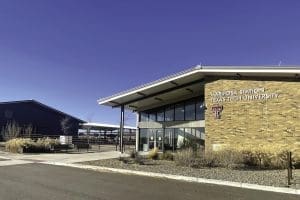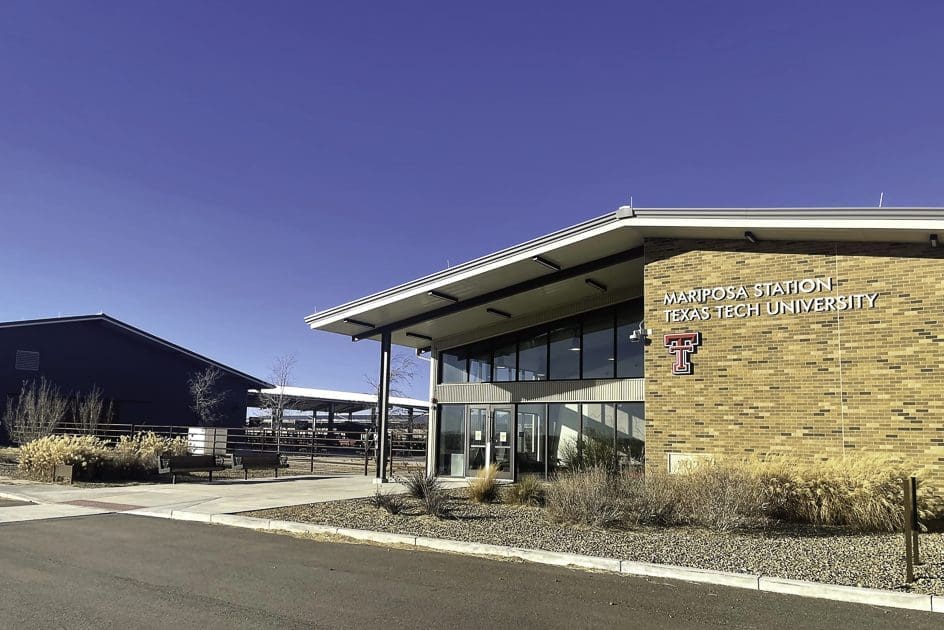By Larry Stalcup Contributing Editor

When Amarillo’s Texas Tech University School of Veterinary Medicine (SVM) welcomed its first students in 2021, a major purpose was to help train more large animal vets to serve the major beef cattle, dairy and other livestock industries in communities across the Southwest. That prescription is close to being partially filled, as students entering their final year in 2024 are immersed in beef cattle, dairy and other vet practices in the school’s unique year-long clinical program, says Britt Conklin, DVM, associate dean of the SVM’s clinical programs.
Now in its fourth year, the SVM has more than 240 students. It recently completed interviews with some 200 applicants for 100 spots to open for the class of 2028, Conklin says. The school had 62 students when it opened as part of the Texas Tech Health Sciences Center in northwest Amarillo.
In 2022, another 79 students were accepted, along with 103 in 2023. The SVM has a faculty of 60-plus and a staff of nearly an equal number. Conklin says students in the Class of 2025 are now launching into their clinical year, noting that “the progression has been fast, and we couldn’t be happier.”
Expanded Exposure
During their clinical year, students rotate in 11 different fields and/or practices in separate four-week blocks. “They will be exposed to what a real practice is like and challenged to participate and add value to those practices,” Conklin says.
Students are allowed to select various areas of clinical studies. Since many students are from smaller communities, many have sought training in practices in smaller cities and towns, including those that treat cattle, horses and other livestock.
With the large number of Texas Tech Red Raider alumni involved in the beef, dairy and other ag-related ventures and allied industries, there has been no shortage of entities interested in accepting students in the clinical program. Clinical sites also include supporters of Texas A&M, Oklahoma State, New Mexico State and other universities that have well-established vet schools.
“We have 105 clinical sites that are eager to accept students,” Conklin says. “Close to 80 percent of the students were interested in working in a community practice. That includes mixed practices that deal with large animals. Based on the focus of the students and their choices, their clinical assignments were overwhelmingly filled based on their interests.”
Mariposa Station
The journey to the final year for the class of 2025 has included extensive hands-on training at the Texas Tech Mariposa Station about two miles from the Health Sciences Center in northwest Amarillo. The station features extensive animal health sectors to teach methods of treating beef and dairy cattle, horses, sheep, hogs and small animals. Corporate support from companies like Cactus Feeders and the Allsup Family Charitable Foundation helped fund the station.
“Mariposa Station is a hands-on facility for students to study large animals [veterinary care] in the first three years of study,” Conklin says.
The station maintains herds of horses, beef and dairy cattle, and buys cattle relative to lab needs. Swine and small ruminates are also among the animals stabled and studied at the facility.
With the SVM’s early success, there is momentum surrounding the program. “There has been much support toward our scholarship program,” Conklin says. “We received $100,000 in the first year, $500,000 in the second and about $1 million in the third. A lot of that comes from communities supported by agriculture.”
He concludes that most people realize the SVM is trying to fill a large-animal vet deficit. And there are also efforts to provide more vets to care for small animals in smaller communities.
Whether it’s helping producers succeed in vaccination and breeding programs, assisting feedyards keep death losses to a minimum, or holding the hands of kids (from nine to 90) crying over sick or injured cats and dogs, SVM is geared to have its first graduating class ready to go to work.
“We feel like we’re producing a product the profession wants and needs,” Conklin says. “We’re excited about the future and where it will unfold.”







